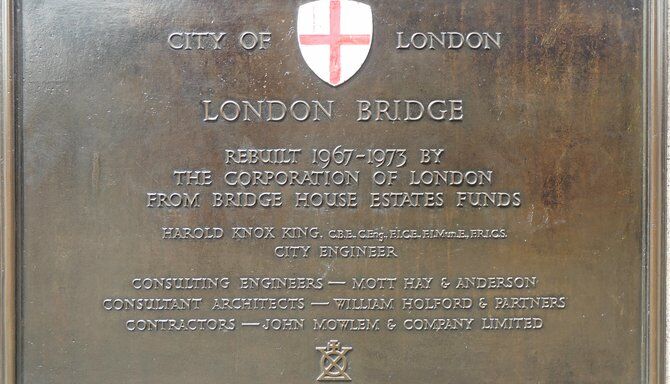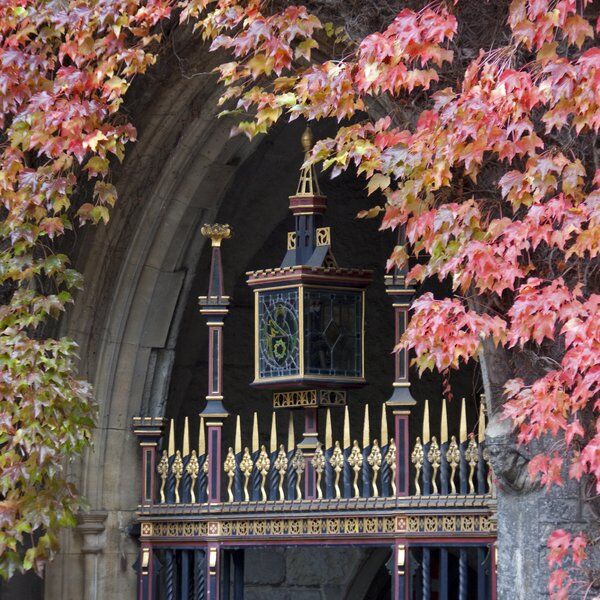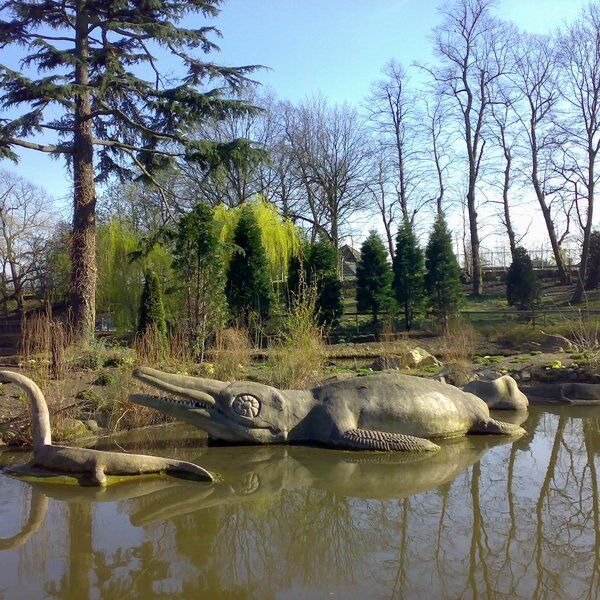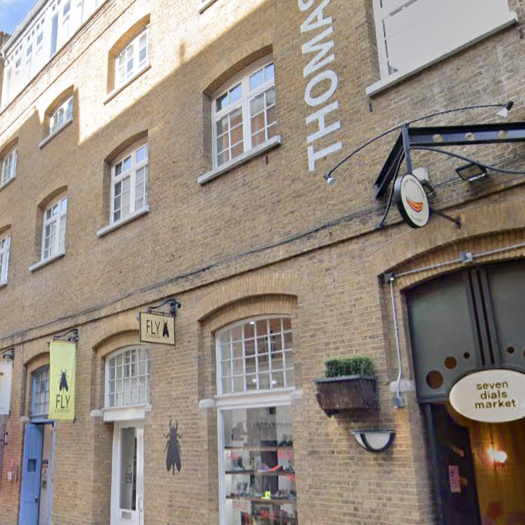Exploring Old London Bridge
Old London Bridge was once an iconic feature of the City of London ferrying people, goods, and livestock across the river, but now it exists only in fragments and memories. Built to replace its Roman predecessor, the bridge spanned the Thames for over 600 years, until its replacement in 1831 by a modern structure upstream.
But, Old London Bridge was not without its perils. Despite its role as a vital lifeline for Londoners, the bridge was not always the safest option. Stormed during rebellions, surviving fires, and witnessing countless historical events, the bridge harboured dangers both on and under its arches.
While little remains of the bridge today, the London Bridge Museum and Educational Trust strives to keep the legacy of one of the world’s most famous bridges, alive. Through online resources and virtual exhibitions, the trust provides information on its Roman origins right through until its eventual demise in the 19th century.
Early History
London's history stretches back to early Celtic settlement, where a primitive bridge was constructed at the confluence of the Wallbrook and the Thames. Roman presence in AD 43 saw the potential of the site, leading to the construction of a pontoon bridge to aid in trade and troop movements. The strategic location of the bridge would have laid the foundation for London to become the economic hub it is today.
With the decline of Roman rule, London faced periods of abandonment and rebuilding, and there were many territorial disputes. Old London Bridge featured in these disputes, undergoing multiple reconstructions and repairs under successive rulers. Norman conquests and Danish invasions left their mark on the bridge's history and appearance.
Design of Old London Bridge (1209–1831)
Peter of Colechurch's ambitious stone arch bridge, constructed between 1176 and 1209, was a symbol of contemporary architecture, characterised by its varying widths. Built east of its modern successor, it had 19 sturdy piers—albeit irregularly spaced—each supported by wooden piles driven into the riverbed. There were also 19 arches and a wooden drawbridge.
Despite facing the mighty Thames, the bridge stood firm for centuries, weathering storms, fires, and the wear and tear of time to serve as the city's sole crossing until the opening of Westminster Bridge in 1750.
Challenges and Maintenance
The construction of such a large bridge posed challenges, especially with its impact on the flow of the river. The irregular spacing of piers created a dam effect, resulting in a difference in water level of up to 5 feet between tides. This accelerated water flow beneath the bridge, causing erosion which needed constant maintenance and even caused bridge collapse in 1281 and 1437.
Life on Old London Bridge
Life beneath Old London Bridge was no bed of roses, as the design caused many problems for river traffic. Combined with treacherous currents and rapids between the piers, attempting to navigate a boat through the arches, known as "shooting the bridge," was a highly dangerous and even fatal affair. The restricted flow of the river also led to freezing in hard winters.
Historians have since recounted the chaos of narrow, dimly lit streets ringing with the cries of watermen and the screams of drowning victims.
Unsanitary Surroundings
But as if navigating the bridge's treacherous waters wasn't enough, boatmen and passengers had to deal with unsavoury sights and smells. Houses on the bridge had no choice but to empty their toilet contents directly into the Thames.
Heads on Spikes at Old London Bridge
For those who dared oppose the crown, a grim fate awaited. Traitors' severed heads, including those of William Wallace, Jack Cade, Thomas More, and Thomas Cromwell, were placed on spikes and displayed at the bridge's Southwark end. Though this practice ceased in 1678, the sight of impaled heads haunted the bridge for centuries.
Houses on the Old London Bridge
The houses on London Bridge were distinct from those on other European bridges. They were larger structures supported by struts inserted into the piers’ stonework. Initially constructed in timber, the houses had cellars for various purposes, including storage and even a tavern.
Nonsuch House was considered a landmark on the bridge. Occupied primarily by haberdasheries and draperies, its distinctive design was a symbol of the architectural richness of the time. Another structure was the House with Many Windows.
Over time, the number of houses fluctuated, reaching a peak of 140 in the late 14th century before declining due to mergers, with about 91 remaining by 1605.
Shops on the Old London Bridge
The shops on the bridge were always busy. Initially dominated by haberdashers, glovers, and cutlers, over time there were also apothecaries, bookshops, and specialty traders.
Despite being renowned for commerce, the bridge faced challenges as trade declined in the 18th century, with the rise of the West End.
The End of Old London Bridge
Cracks and Collapses
In 1425, cracks began to form in the Great Stone Gate at the Southwark end, leading to its collapse in 1437. This collapse also led to the buckling of the adjacent arches. Miraculously, no lives were lost, but the debris lingered in the river for four centuries, obstructing boat traffic. The bridge's misfortunes continued in 1481 when a house crumbled, claiming five lives.
Fire on Old London Bridge
Fire was a relentless adversary for Old London Bridge. During Jack Cade's 1450 rebellion, rebels set ablaze houses at the southern end, forcing people to leap desperately into the river.
In 1666, the Great Fire of London ravaged the bridge’s many buildings on the north side, while in 1633 and 1725, careless servants caused fires that ravaged nearby homes and businesses.
Replacing Old London Bridge
In 1799, plans to replace Old London Bridge were set in motion, leading to a competition for its design. While Thomas Telford proposed a single iron arch span, John Rennie's more conventional design of five stone arches in Haytor granite was ultimately chosen.
Construction on Rennie's bridge began in 1824, and it officially opened—all 928 feet of it—-on 1 August 1831. When the Old London Bridge was dismantled many of its stones and four alcoves were scattered across modern London. Today, the scattered stones can be found in various locations, including St Magnus the Martyr church, Kew Gardens, and Wandsworth Common.
Old London Bridge: Moving to America
Over time, Rennie's bridge faced challenges, including sinking and structural issues. By 1968, it was deemed necessary to replace the aging structure. Remarkably, the bridge itself found an unexpected buyer in Robert P. McCulloch, who purchased it for $2,460,000.
The bridge's granite blocks were carefully dismantled, marked, and transported to Arizona, where they were reassembled to create a new bridge in Lake Havasu City. This reimagined structure was dedicated in 1971, a little piece of London in the USA.
The Modern London Bridge
In the wake of Rennie's bridge, a new London Bridge emerged, constructed between 1967 and 1973. The traditional stone arches were replaced with beams of prestressed concrete and it was built using the cantilever method.
The bridge’s segments were tied together by high-strength steel tendons, which created a central span reaching 104 meters. While not steeped in historical significance like its predecessors, the modern London Bridge is a perfectly functional structure at the heart of the city.
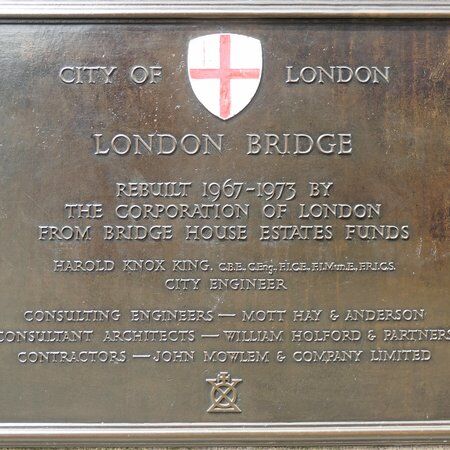
Explore London with CityDays
Interested in finding more fun things to do in London?
Discover London’s secret sights and noteworthy nooks by playing one of our London treasure and scavenger hunts, food experiences, escape room games or walking tours.
You’ll find curated trails and hunts all over London, including Central London, Mayfair, Shoreditch, Kensington and Southwark.
We also provide team building activities in London that can be made bespoke to include your office, wherever in the capital you are.
All you have to do is team up with your partner, friends, family or colleagues to solve riddles, complete challenges and answer trivia to lead you on an unforgettable journey around London’s most intriguing streets.
The best part? We’ll recommend top-rated pubs, cafés and restaurants and give your team the chance to earn rewards by competing on our leaderboard.
Take the stress out of planning your visit to London and book your adventure today!
Not visiting London this time? Don’t worry, you’ll find us all over the world.
